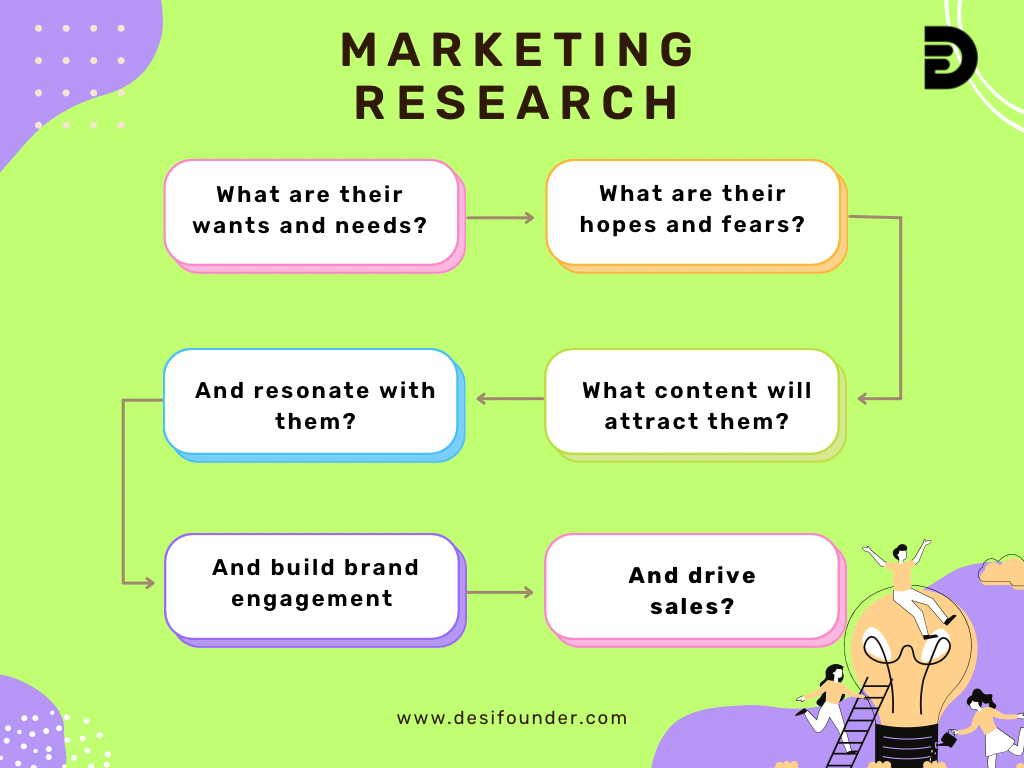How important is Marketing Research and what is the need of it? Startup Founders many a times focus on either the problem or the product itself entirely. They soon get a reality check when they launch their amazing product in the market, yet majority of the customers aren’t even interested in it. They assumed that the problem which they thought is quite unique and the product they built to solve that problem is also great. But, what did they miss during this journey of Idea to Reality? Marketing Research. This is what they figured is not as important enough to waste time on, because they’ve often heard Launch Fast, Fail Fast.
This isn’t just a problem with Startup Founders though. There are multiple case studies of Big Corporations messing it up, taking the customers for granted. They launched a product just because they already had a large customer base and a good branding. We will post a few case studies down below at the end of this article, for you to go through and understand the blunders they made, which would have been easily avoidable with a simple marketing research during their test phase.
Table of Contents
What is Marketing Research?
Marketing Research is basically about understanding your target audience, for a specific marketing campaign, before launching a product in market. It involves evaluating marketing initiatives, such as advertising campaigns, product positioning, pricing strategies, and promotional activities.

To elaborate a bit more about Marketing Research, go through the points stated below.
- Marketing research helps you to understand how people perceive your brand, how well they might resonate with it, how happy they are with it, and how well your marketing might or is already working.
- It’s a tool to check how your strategies are performing, and can help you in fine-tuning your campaigns, and make your overall marketing better.
- The main goal is to figure out what customers need and want, which can help you to create the strategies that can match those needs.
- It can also helps you in spending your marketing budget wisely, and for measuring what you’re might be getting back (ROI), and for making sure that your marketing aligns with your company’s goals. Overall, it helps in having a successful Product Market Fit.
Process of Marketing Research
You can follow the basic frameworks one by one, which can help you in achieving your goals of a successful marketing research.
1. Define The Problem
As a Startup Founder, most of you will already have defined a problem which you are set to solve. Still, during the research process, you need to have a clear definition of what exactly is the problem, and more importantly, if this problem is big enough for it to interest the market. If the problem is not big enough to be solved, where people will feel the need of a solution for it, then it’s better to move on to bigger problems. It’s very tough for a customer to part with their money, if the problem or inconvenience isn’t big enough for them.
2. Set an Research Objective
Before planning to pour out your money, time, resources and energy into the Marketing Research, first set an objective of what you plan to achieve from this research. Without an objective as a driving force, you will still be kind of clueless even after gathering the data you require, as you will not know what to do with this new information. Try to keep the objective on point by it being clear, specific, measurable, relevant, realistic and time-bound.
3. Make a Research Plan
Once you know the problem, and the objective, it is now time to make a good documented research plan. Without a proper plan, you are just walking blindly, which is eventually a waste of your time and resources. The main goal here is to construct a roadmap to follow, and not get distracted or strayed away during the process. There is currently an overload of available tools both online and offline, to help you in conducting your research. Do not get overwhelmed with it, and try to stick to the ones which you are comfortable with.
The basic points to cover in your research plans are:
- List of members who will be involved in the plan
- The purpose of the research
- Objective and goals of research
- Tentative Timeline with deadlines
- Type of Audience – can be customers or non-customers
- Budget required for the plan
- Any contingencies or risk factors to be aware of during the research
4. Gather Secondary Research Data
Secondary Data basically means a survey already conducted before by other organizations, government or people. They might have been conducted for completely different purpose, but that doesn’t mean it won’t be useful to us if the data is reliable. It helps us kick-start the process with a basic idea of the market and prior evaluations. You need to however take permissions from the ones who conducted their research before using any of their data, and cite publicly available data for better transparency and understanding. Secondary Data helps in reducing the overall budget of the Marketing Research process, as you do not have to start the data gathering from scratch.
5. Start Primary Research
Now that you already have a basic idea, along with a set roadmap, it is time to dive in to get your goal specified research. Primary Research is very crucial, as it tries to get the exact data closest to your objective, and it can be tailored into what your actual need is. There are multiple ways through which Primary Research can be conducted.
Some of the common but not limited to tools which can be used to conduct Primary Research are:
- Surveys
- Interviews
- Observations
- Experiments
- Polls
- Ethnographic Research
It is always necessary to utilize both your Primary Research Data and Secondary Data, to compare and/or combine the needs to obtain your objective. They can be integrated well if utilized smartly.
6. Channels of Research
The channels to conduct your research have been getting more approachable and wider every decade. You no longer have to physically reach out person to person to get a feedback from them for your data gathering.
Channels to conduct your research are listed below:
- Postal Research (Through Postal Mail with Business Addresses)
- Online Research (Surveys, Emails, Software, Analytics, Observation, etc.)
- Telephone Research (Cold Calls, Call Centers, SMS, etc.)
- Face to Face Research (Individual, Group, Video Calls, etc.)
Case Studies
- Coca Cola the champion of Marketing fell flat in 1980s when they introduced New Coke which was sweeter. Even though they did a Marketing Research, the users were not aware that they had to chose between Regular Coke and New Coke during the research. Once the product launched, it turned out badly for them as they completely replaced New Coke without giving option of the Regular Coke to consumers. Even bringing back the Regular Coke didn’t help them, and they had to eventually phase out the New Coke.
- Kodak, the company who actually pioneered Digital Photography Cameras after doing a Market Research did not adapt to market preferences, as their current analog cameras brought in more profits to them with the sales of film and other products. They focused more on their heavily invested budget on chemicals, paper, etc. and ignored the market. This led to their eventual bankruptcy.
- KOO, an Indian Micro-blogging platform recently shutdown even with huge backing of funding. They failed to differentiate themselves from Twitter, and went for short-term gains trying to appease one set of political side. Had they done extensive marketing research, and had pivoted to something different, they might have survived and thrived.
- Quibi, a mobile only short format streaming platform with over $2 Billion in funding failed to capture the market or understood the market’s need. It can be called as a fusion of Netflix + Tik-Tok. Consumers did not understand nor needed another streaming platform which was limited to just mobile devices. Hence, they eventually shut down.
Think of Marketing Research as your GPS when launching a new product. It’s like having a map that shows you the best route to success, helping you avoid any major detours. The most important thing? Figure out what your customers actually need and want. They’re the ones who put money in your pocket, after all! Hope this helps, fellow Desi Founder! You can find even more startup tips here.

